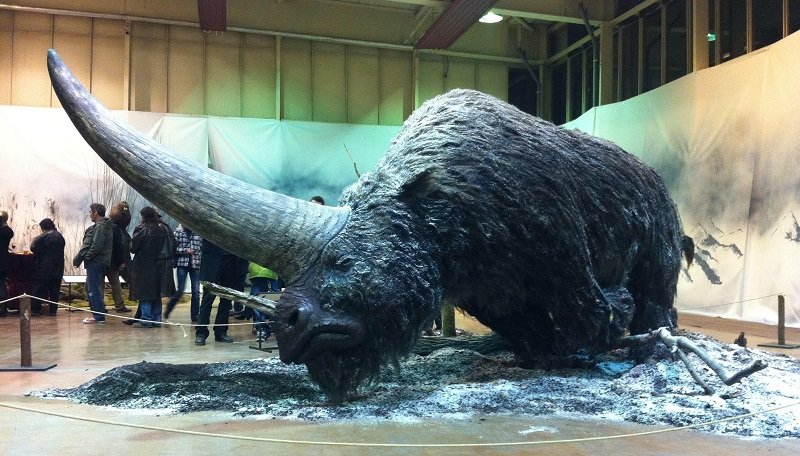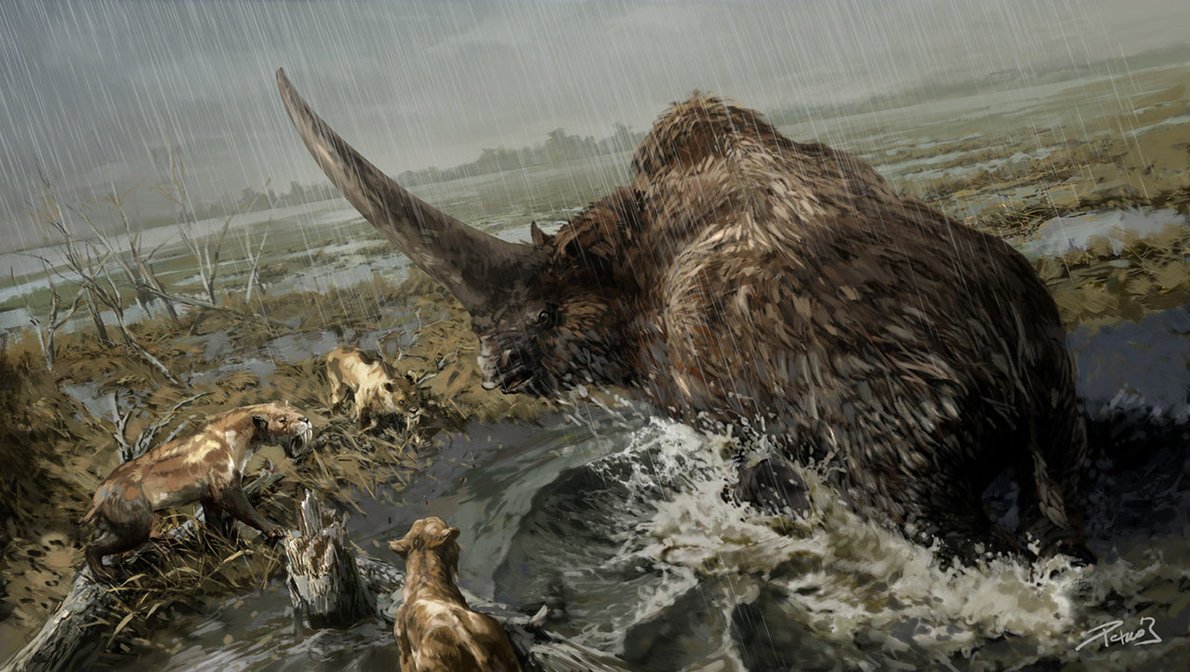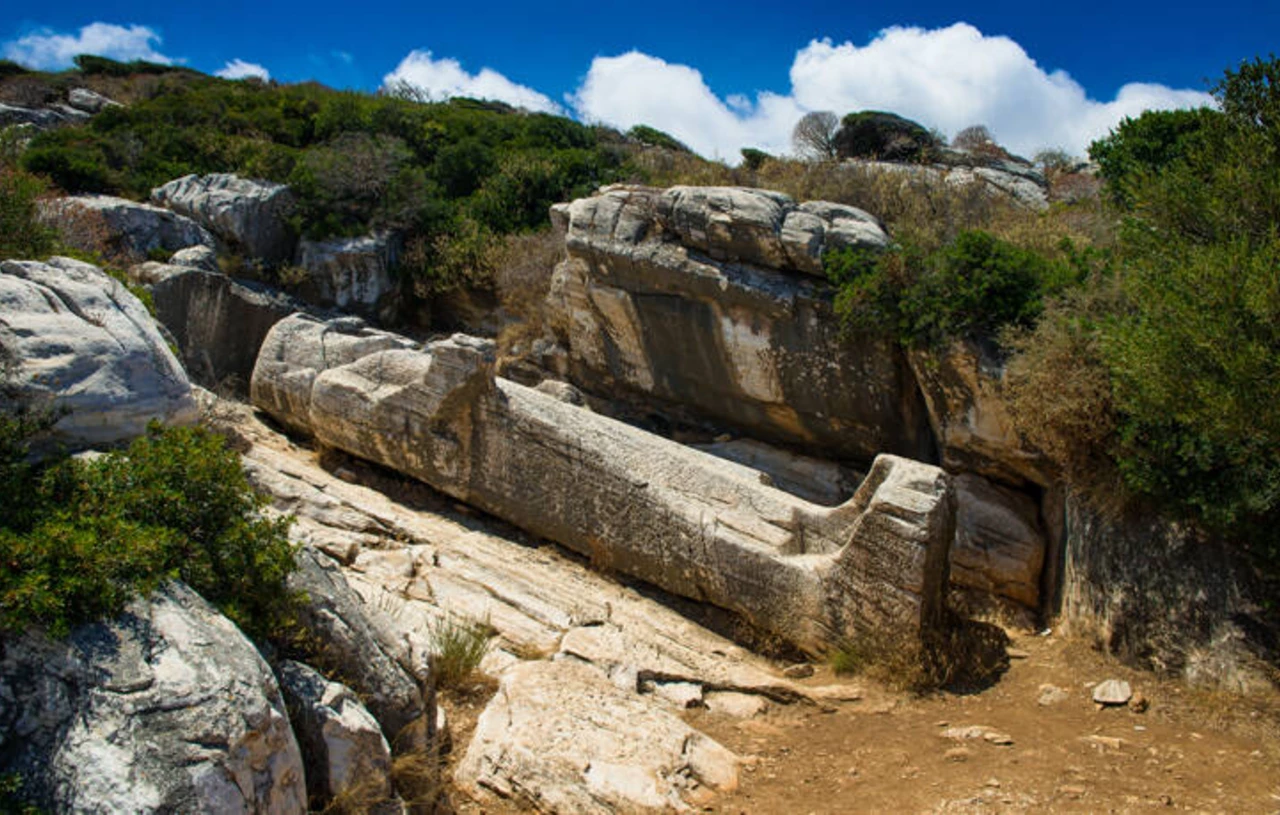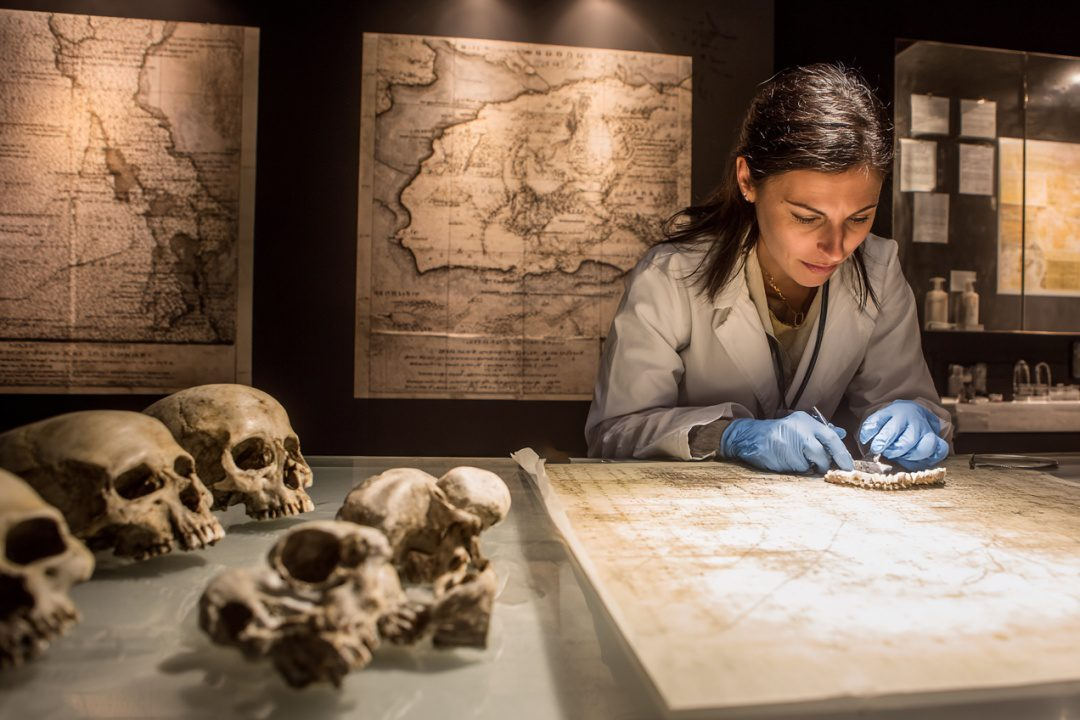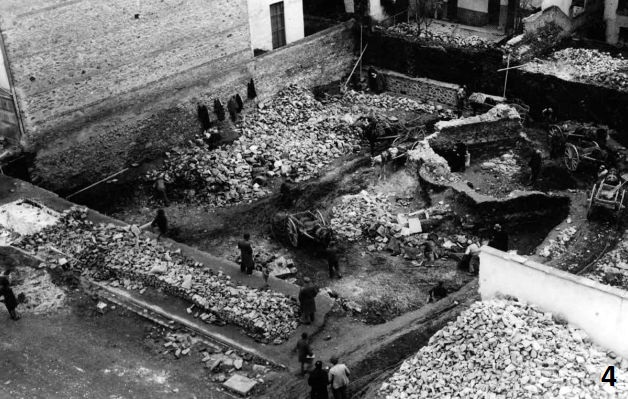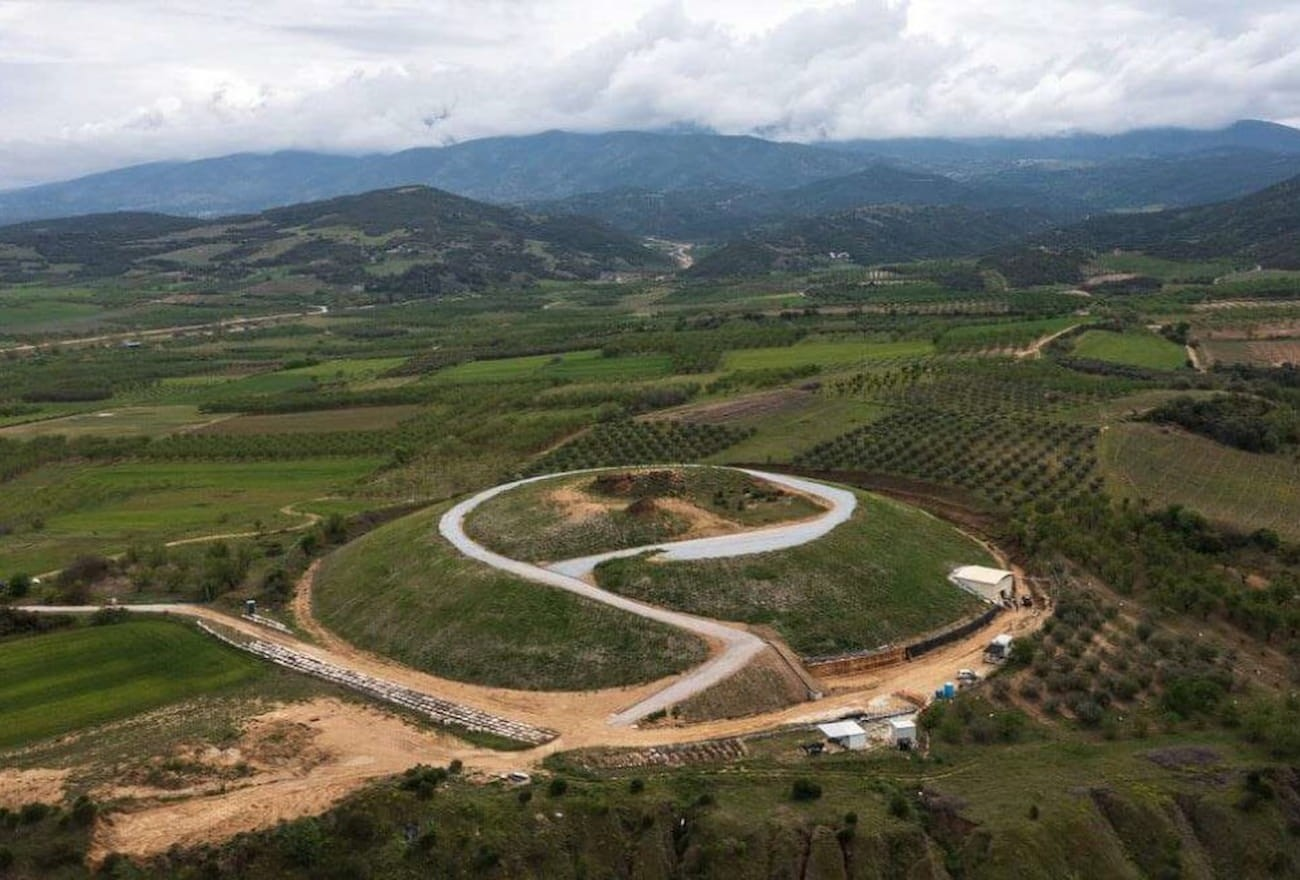The Moon rotates around the Earth at about the same speed, as it does around its axis, that’s why we can only see one side of it. It means that 41% of its surface hasn’t been explored yet! This fact surprises many people, as we are used to thinking that we know everything about all things in the world. While even our own planet remains a mystery to us.
Yes, Giant Swords Existed, BUT...
You can find some astonishingly huge swords in museums, and even a few that look like they came straight out of Monster Hunter or some other fantasy game. Were they made for exceptionally tall and strong warriors, or did they serve another purpose, outside of the battlefield?
Let's delve into a few examples to get an idea of just how humongous the biggest ones are. This video also contains a brief look at the historical origin of the greatsword / zweihander / montante / spadone, and what distinguishes it from a longsword.
"That Event Changed the World Forever!" | Top 10 Events That Reshaped History
The way we think about history influences how we think about the present and how we see the world, as well as how we think about reality and our own futures. Engaging and understanding the world around us requires a thorough awareness of how history impacts the present and future. We tried to compile an objective list that covers the most significant and impactful events in world history, the ones that affected the globe more than any other.
Some events take place over a few years, while others span decades. Some had a limited impact on a particular country or continent, while others expanded across the globe and touched every continent. However, we have managed to compile a list of the most significant events in world history.
The Most Dangerous Uncontacted Tribes in The World
In this video we will be exploring the most dangerous uncontacted tribes in the world. Enjoy!
Tallest Statue Size Comparison (3d animation)
What is the biggest biggest statue in size? Ever wondered how tall statue of liberty is? Or what about statue of unity ? Well! Let’s take a look at some of the biggest statues arround the world ranked by their size.
Celebrities Who Look Eerily Similar To People From The Past
Some celebrities look like people from the past and few of them are mind-melting. Time travel or reincarnation are concepts that belong more in the world of science fiction, philosophy or religious beliefs. However, after seeing photos of few celebrities compared to people from the past, one may start to question whether this is a pure coincidence or perhaps something else is at play.
Nevertheless, check the following video for examples of these historical doppelgangers and see if this will change your mind with regard to time-travel or reincarnation.
2000 Year Old Bible Revealed Lost Chapter With Terrifying Knowledge About The Human Race
Few historical writings arouse as much curiosity as the Book of Enoch, which has been described as "forbidden from the Bible" for unveiling profound truths about the mysteries of creation.
It's a book filled with sensual fallen angels, violent giants, strange cosmology, and world-changing revelations. The Book of Enoch is an apocryphal Old Testament book about events that occurred a century before the birth and ministry of Jesus. Most Christian denominations do not consider this book to be divinely inspired scripture. At the end of the fourth century, the original manuscript disappeared; it was later discovered in Abyssinia, Ethiopia, in 1773. Only the Ethiopian Christian sect includes the Book of Enoch in their scriptures.
Today, we show the startling revelations from the book of Enoch that have been forbidden from the Bible.
The Strangest Pyramid Passage Ever Constructed
The Great Pyramid of Giza holds the most uniquely bizarre passageway ever constructed in an Egyptian pyramid. The ascending corridor, which famously leads to the magnificent Grand Gallery, is designed with masonry that cannot easily be explained.
Unlike every other pyramid corridor, the blocks of the ascending corridor are carved from enormous single stones called ‘girdle-stones’. These blocks are also not aligned to the passage itself, but always oriented vertically with the pyramid.
Compounding this mystery is the fact that the limestone in the ascending corridor has deteriorated more than any other section of the Great Pyramid’s interior. Is it possible to reconcile all of these anomalies? What can the historical account of the Edgar Brothers documenting the ascending corridor teach us today?
10 Believed Extinct Animals Still Alive
In this video we are discussing the Top 10 Believed Extinct Animals Still Alive! Over 5 billion animals have gone extinct since time began, but some animals such as the woolly mammoth and the Tasmanian tiger may still be around with us today!
How 4 Million Fossils Are Extracted From Tar At La Brea Tar Pits
Excavators at the La Brea Tar Pits & Museum work to dig up fossils of mammoths, dire wolves, giant sloths and more out of the ground. They clean and piece together the bones, and prepare them for research and museum collections. With 4 million specimens already in scientists' hands, why keep excavating after more than 100 years?
The La Brea Tar Pits is one of the only paleontological sites on Earth that has preserved an entire ecosystem over time, from plants to camels to bugs. And every new fossil not only helps tell the story of the Los Angeles Basin over 50,000 years but also gives us clues about how current species, including humans, could weather climate change in the future.
We went to the La Brea Tar Pits to see how specimens are discovered, cleaned, and pieced together to build a record of the last 50,000 years.
Peruvian Whistling Vessels Are Weird
In the video belowe we will analyzing the Peruvian whistling vessels. Watch the video for more and enjoy!
99 Years Later... We Solved It
How do these rocks move on their own in the desert? Watch the video below to find out!
Evolution of the Alphabet | Earliest Forms to Modern Latin Script
BY THE ARCHAEOLOGIST EDITOR GROUP
The history of written communication is a captivating tale that stretches back thousands of years. One of its most fascinating narratives is the evolution of the alphabet, a set of characters representing the individual phonemes of a language. This article will trace the progression from the earliest forms of alphabets to the modern Latin script most familiar to Western readers.
Proto-writing and Pictograms
Before the invention of the alphabet, ancient civilizations like the Sumerians utilized pictograms—simple drawings used to represent objects or concepts. Over time, as the need for more nuanced communication grew, these pictures evolved into more abstract symbols that represented not just objects but sounds and syllables.
Cuneiform and Hieroglyphs
The Sumerians, who lived in ancient Mesopotamia around 3500 BCE, developed cuneiform, one of the earliest known writing systems. These wedge-shaped inscriptions were made on clay tablets and represented words or syllables. Meanwhile, in ancient Egypt, hieroglyphs, a combination of logographic and alphabetic elements, were used for religious texts, monumental inscriptions, and other official documents.
The Phoenician Alphabet
Around 1200 BCE, the Phoenicians, a maritime trading culture from the Levant, simplified these systems to create one of the earliest alphabets. Their script had about 22 characters, all consonants, and was written from right to left. It became widely adopted due to their extensive trading networks.
Greek Adaptation
As the Phoenician script spread, it was adopted and adapted by various cultures. The Greeks were one of the most significant adopters. They not only borrowed letters but also introduced vowels into the system, an essential step towards creating a true alphabet where every sound, both consonant and vowel, was represented by a distinct character.
The Roman/Latin Script
The Romans were next in line to adapt the script. They borrowed heavily from the Greek alphabet (which was in use in parts of Italy) and added some Etruscan characters. The result was the Latin script, which became the foundation of the Western writing systems we recognize today. The Romans popularized this script throughout their vast empire, from the British Isles to North Africa.
Medieval and Modern Developments
With the fall of the Roman Empire, various regions in Europe began to adapt the Latin script to fit their languages. Letters were added, removed, or modified over time. The Carolingian minuscule, a clear and legible script, was developed during the reign of Charlemagne and became the standard for writing in medieval Europe.
The invention of the printing press by Johannes Gutenberg in the 15th century further standardized the Latin script. The typefaces designed for early printing presses are the ancestors of modern fonts.
The journey from pictograms to the modern Latin script is a testament to human ingenuity and the ever-present need to communicate more effectively. While the characters have evolved and multiplied, the essence remains the same: to represent the sounds of our speech in visual form. The alphabet, as a reflection of our linguistic evolution, showcases the dynamic nature of culture and communication.
Spartan Black Broth | Melas Zomos
If you've ever wanted to be a Spartan warrior, then making a bowl of Melas Zomos is just a part of the process. Today, we cover each step in making both Melas Zomos and in making a Spartan warrior. Enjoy!
How to make 2,000-year-old-bread
In AD 79, a baker put his loaf of bread into the oven. Nearly 2,000 years later it was found during excavations in Herculaneum. The British Museum asked Giorgio Locatelli to recreate the recipe as part of his culinary investigations for the cinema production 'Pompeii Live from the British Museum'.
‘Siberian unicorn’ walked Earth with humans
An extinct giant rhinoceros, sometimes described as a “Siberian unicorn,” lived on the planet much longer than scientists previously thought, new research shows.
A study published on 2018 in the journal Nature Ecology & Evolution says that the shaggy creature once roamed among humans, surviving in Eastern Europe and western Asia until at least 39,000 years ago, around the same time of Neanderthals and early modern humans.
The report’s authors have not responded to a request for comment.
The latest findings used radiocarbon dating and genetic analysis on 23 specimens of the rhinoceros to reveal the life of the mysterious 3.8-ton Elasmotherium sibiricum, which was previously thought to have become extinct about 200,000 years ago.
They suggest that the “Siberian unicorn,” which would have lived in modern-day Russia and had range that extended to areas in Mongolia, northern China and Kazakhstan, went extinct due to environmental changes that affected the sort of grasses and herbs it used to eat, the study’s authors wrote in the Conversation.
The animal, whose horn could be up to a meter long, found it hard to shift away from a grass diet, the authors wrote.
“Relatives such as the woolly rhino had always eaten a more balanced array of plants, and were much less impacted by a change in habitat,” they wrote.
They added that humans were not the cause of its extinction.
“In addition to this, the persistently restricted geographical range of Elasmotherium (also probably linked to its specialized habitat), as well as the low population size and slow reproductive rate associated with its large body size, would have predisposed it to extinction in the face of environmental change,” the authors wrote in the study.
The scientists say the loss of the Siberian unicorn provides a useful case study “displaying the poor resilience of rhinos to environmental change.”
Ancient DNA analysis reveals Marriage rules in Minoan Crete
New archaeogenetic data allow exciting insights into the social order of the Aegean Bronze Age
The well-known figure of a Minoan goddess, artistically appropriated and depicted holding DNA chains instead of snakes. The population is born from her "ancient" body. The orange and red genealogy refers to the research finding of endogamy between first and second cousins. Credit: Eva Skourtanioti
An international team of researchers from the Max Planck Institute for Evolutionary Anthropology in Leipzig, Germany, reports completely new insights into Bronze Age marriage rules and family structures in Greece. Analyses of ancient genomes show that the choice of marriage partners was determined by one's own kinship.
A research team from the Max Planck Institute for Evolutionary Anthropology, together with an international team of partners, analysed over 100 genomes of Bronze Age people from the Aegean. “Without the great cooperation with our partners in Greece and worldwide, this would not have been possible,” says archaeologist Philipp Stockhammer, one of the study’s lead authors.
Akrotiri, 1600 BC. G.Rava art
First biological family tree of a Mycenaean family
Thanks to recent methodological advances in the production and evaluation of ancient genetic datasets, it has now been possible to produce extensive data even in regions with problematic DNA preservation due to climate conditions, such as Greece. For a Mycenaean hamlet of the 16th century BC, it has even been possible to reconstruct the kinship of the house’s inhabitants – the first family tree that has so far been genetically reconstructed for the entire ancient Mediterranean region.
Apparently, some of the sons still lived in their parents’ hamlet in adulthood. At least their children were buried in a tomb under the courtyard of the estate. One of the wives who married into the house brought her sister into the family, as her child was also buried in the same grave.
olive harvesting in the Aegean Bronze Age. Credit: Nikola Nevenov
Customary to marry one’s first cousin
However, another finding was completely unexpected: on Crete and the other Greek islands, as well as on the mainland, it was very common to marry one’s first cousin 4000 years ago. “More than a thousand ancient genomes from different regions of the world have now been published, but it seems that such a strict system of kin marriage did not exist anywhere else in the ancient world,” says Eirini Skourtanioti, the lead author of the study who conducted the analyses. “This came as a complete surprise to all of us and raises many questions.”
How this particular marriage rule can be explained, the research team can only speculate. “Maybe this was a way to prevent the inherited farmland from being divided up more and more? In any case, it guaranteed a certain continuity of the family in one place, which is an important prerequisite for the cultivation of olives and grapes, for example,” Stockhammer suspects. “What is certain is that the analysis of ancient genomes will continue to provide us with fantastic, new insights into ancient family structures in the future,” adds Skourtanioti.
More information: Eirini Skourtanioti, Ancient DNA reveals admixture history and endogamy in the prehistoric Aegean, Nature Ecology & Evolution (2023). DOI: 10.1038/s41559-022-01952-3.
Palatiano (Ioron) of Kilkis city, Greece: The ancient city that worshiped Dionysus and idolized Patraοs
The story of a city founded in the 10th century BC, glorified the family of Patraos, who is unknown until today, and when it was mysteriously destroyed, it was never inhabited again.
In a magical place at the foot of the Krousia massif, which is as green today as it was thousands of years ago, the ruins of an ancient city are preserved on a hill. From this peak the inhabitants saw their life, the land that fed them, the water, the plants that sprouted, they saw the sun dancing on the leaves of the olive groves, the vines that promised delicious wine, the figs that filled their daily table with sweetness. They saw the land where their herds grazed, next to the river Echedoros, meaning "the one that has gifts" and gave everything that its name promised, its raw materials, its precious metals, gifts of wealth, the most important of which was gold!
The ancient city of Palatiano, 20 kilometers north of Kilkis, was in a naturally fortified position and controlled the important passage from the ancient region of Christonia to the regions of Parorvilia and Sintica, that is, to Lake Kerkini and Serres, and even further west.
It is even very likely that it is identified with the ancient city of Ioron, which means guardian, and the name is fully justified by its location.
Palatiano was founded in the 10th century BC and developed in the classical and Hellenistic years from the 4th to the 1st century BC, centuries in which it became an urban center.
It reached its peak in the Roman years, from the 1st to the 3rd century AD, when it was destroyed by an unknown cause. This era is called the Pax Romana (Roman Peace) and Palatiano flourishes and benefits from the goods of peace.
The city was protected by fortifications and its development was adapted to the morphology of the terrain. In the excavated eastern part of the hill, which developed amphitheatrically, a high retaining wall contributed to its division into two districts.
Today's ruins, set in a beautiful natural landscape, seem to exude the splendor of antiquity. The visitor can walk through the authentic ancient streets of the city and climb to the top of the hill where the sanctuaries of the gods, the center of public life, were probably located. He can cross the narrow streets between buildings, houses and workshops, follow the natural slopes of the hill and wander through the neighborhoods that were once bustling with life.
The Palatiano was destroyed - for unknown reasons - but never rebuilt and never inhabited again, but the houses of the ancient inhabitants have survived the centuries unscathed. The modern passerby can imagine the people who once filled these buildings with life. In the rooms of the houses were found the personal belongings of the former inhabitants: mirrors and jewelry, tools for the house and field, lamps to drive away the darkness of the night, storage and drinking vessels, even toys, small clay carts with wheels for children, so many thousands of years ago, just like today.
The head of the Department of Antiquities of Kilkis, Georgia Stratouli says that "among the most important monuments that testify to the wealth of the city are the two honorary Heroa found in one of its neighborhoods. One of them, the family Heroon(a shrine dedicated to an ancient Greek or Roman hero and used for the commemoration or cult worship of the hero) of Patraos, Ammia and their three sons, is preserved in very good condition, with four of the five statues of the family members almost intact."
Patraos wears a tunic in a classical statue type that exudes prestige and respect, while the wife and mother, Ammia, is a respected mistress. Two of the three sons, one of whom is depicted as an athlete in heroic nudity while the other holds scrolls. Perhaps he was educated, perhaps he had distinguished himself in the political or intellectual life of his place.
The archeologists studying the material are now called upon to answer the question: Who was this famous Patraos really? Was he a metal trader who became rich? The archeological excavation brought him and his whole family to light, and the discovery is perhaps another myth in the labyrinth of human imagination.
According to Ms. Stratoulis, "the inhabitants of Palatiano believed in Olympian gods: Zeus, Hermes, Athena, but it seems that their favorite was the god Dionysus. In fact, a full-figure statue of the god with a panther skin was found in the area, while an inscription gives him the epithet GONGYLOS (= round). However, they also worshiped other deities such as the eastern Kybele, the Greek mother of the gods and the Egyptian god Bissa".
The finds from Palatiano indicate a robust, developed and diverse urban society, associated with agriculture and animal husbandry, but also with crafts and trade, while the large number of coins suggests trade relations with other Macedonian cities.
It is very likely that the source of their great wealth was some kind of metalworking craft, which was apparently very important for the inhabitants of the ancient city. Perhaps Patraos became rich through it, who raised an honorary Heroon for his family.
"The important thing about this archaeological site is that we can empathize with the people of the past. How did the people who lived in these houses, who walked through the alleys to get to their sanctuaries, or to their properties at dawn? What stories can we tell? Let us think about them when we look at their personal belongings," says Ms Stratoulis.
Palatiano is a vibrant city. A city that still exudes the aura, the joys, the sorrows, the failures and the successes, the loves and the sorrows of a complex but also simple society. And by its simplicity it fascinates the visitor.
The Ephorate of Antiquities of Kilkis has created a very interesting film to introduce the Palatiano to the general public. The general coordination and the overall editing of the film is the responsibility of the head of the Ephorate, Georgia Stratoulis, the scientific editing is done by the archaeologists Nektarios Poulakakis and Maria Farmaki, while the "tour guide" in the area is also the archaeologist Theodoros Papakostas and the direction was led by Thanos Kartsoglou.
Gary Vikan: It is nonsense that the British Museum will be emptied if Elgin Marbles are returned
Gary Vikan was director of the Walters Art Museum in Baltimore from 1994 to 2013.
The British Commission for the Reunification of the Parthenon Sculptures cites a recent New York Times article and statements by Gary Vikan, former director of the Baltimore museum.
"If anyone tells me that the British Museum will somehow be emptied by the return of the Parthenon sculptures to Greece, that's nonsense", commented Gary Vikan, director of the Walters Art Museum in Baltimore from 1994 to 2013.
Prior to his work in Baltimore, Vikan was a senior fellow at Harvard's Center for Byzantine Studies at Dumbarton Oaks in Washington. He is a graduate of the Harvard Program for Art Museum Directors and the National Arts Strategies Chief Executive Program.
Vikan notes, "When I first entered the curatorial world, it was like the Wild West. Curators and museum directors wanted to acquire important works. They wanted to be the ones to get this painting, this sculpture, etc".
According to him, respective countries can - and do - make demands for antiquities that became illegal to export without official permission when it was already too late. "Italy, for example, has had such a law since 1909," he says.
Vikan, a former museum director, said that while he fully supports repatriation campaigns, the cost to museums is not just the loss of objects already in the collection. Given their limited acquisition budgets, U.S. museums rely on donations of antiquities, and now donors who do not have the necessary documents may be reluctant to donate and museums reluctant to accept them.
However, he is not concerned that the major museums, which typically display only a fraction of their holdings, will be hit hard by the increased repatriation efforts.
"If someone tells me that the British Museum will be emptied if the Parthenon sculptures are sent back to Greece, that's nonsense," he concluded.
Taiwan finds 4,800-year-old fossil of mother cradling baby
TAIPEI (Reuters) - Archaeologists in Taiwan have found a 4,800-year-old human fossil of a mother holding an infant child in her arms, museum officials said on Tuesday.
The 48 sets of remains unearthed in graves in the Taichung area are the earliest trace of human activity found in central Taiwan. The most striking discovery among them was the skeleton of a young mother looking down at a child cradled in her arms.
“When it was unearthed, all of the archaeologists and staff members were shocked. Why? Because the mother was looking down at the baby in her hands,” said Chu Whei-lee, a curator in the Anthropology Department at Taiwan’s National Museum of Natural Science.
The excavation of the site began in May 2014 and took a year to complete. Carbon dating was used to determine the ages of the fossils, which included five children.




